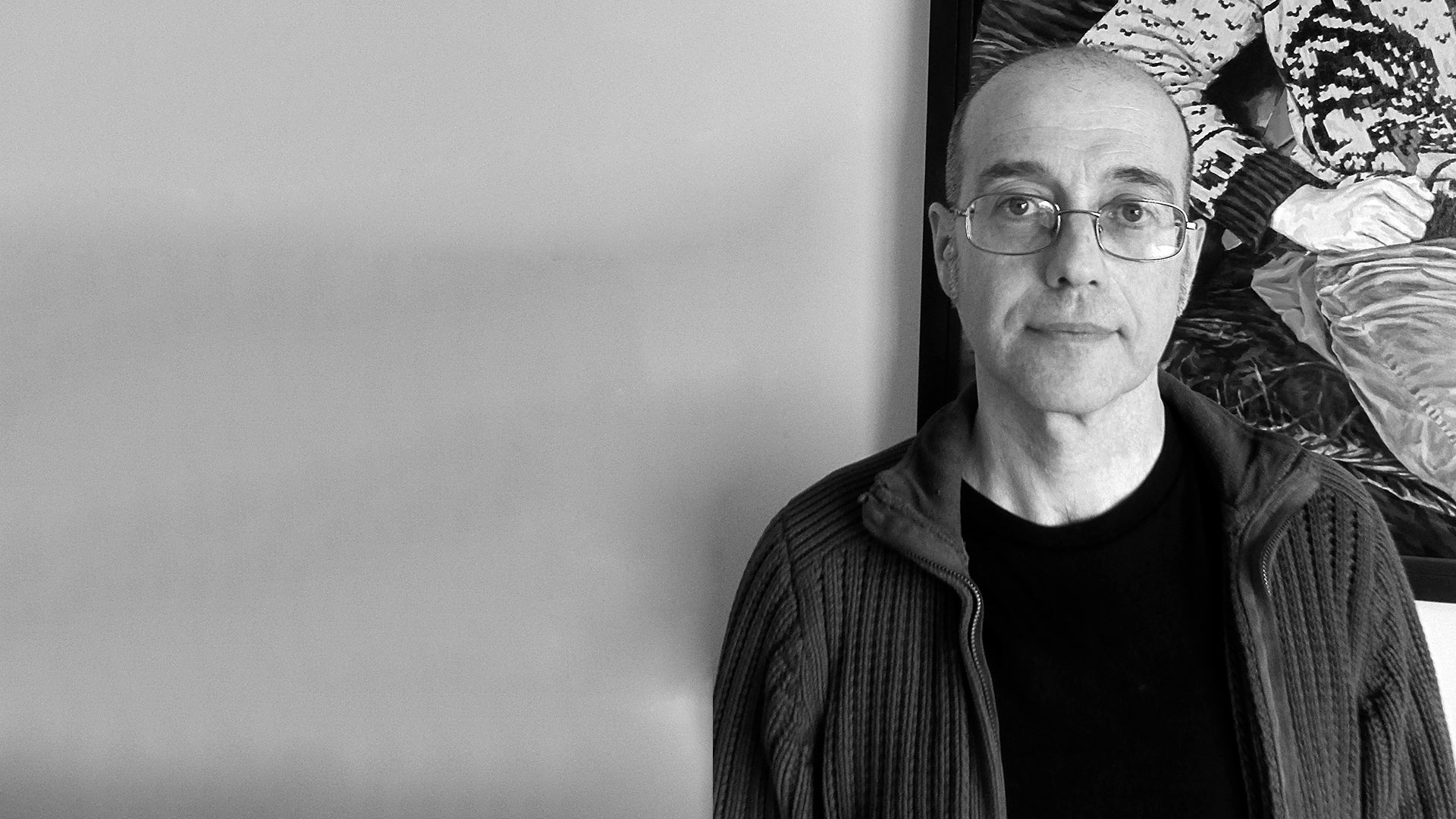This January, we're exploring the world of portraiture in our series "Beyond The Face."
Portraiture asks us to see beyond the surface and explore what it means to truly see ourselves, others, and the spaces we inhabit.
Through the human form, we discover new perspectives not in subject, but in the act of creating.
By experimenting with how we capture the figure through different materials, approaches, and perspectives, we break the boundary between form and meaning.
In this installment, artist Francis Tiffany offers us portrait tips & techniques.
Artist Q&A with Francis Tiffany
What materials do you use for your portrait work, and how do they influence your process?
I am by practice and inclination an oil painter. Oil paint is by far the easiest medium to use, the most adaptable and most permanent - nothing else comes close. However, if a client requests another medium for a commission, I will use that. The next most common materials I use after oils are: acrylics, casein, and charcoal (both stick and liquid) used with painted-in gesso.
One of the greatest virtues of oil paint is that there is no colour-shift - the colour one mixes is the colour one gets. I find that is a major disadvantage of water-based media, the darks dry lighter, and the light tones darker. You get used to it, but it’s still not as simple or as intuitive as oils.
Brushes are always natural fibre for oils and synthetic for water-based media. I have tried man-made bristles for oils, but they always splay. I have used and collected hundreds of brushes over the decades; if you look after them they last. The key to their longevity being regular cleaning with a good brush soap.
Surfaces and supports are again as the client requests - although usually it’s canvas or, more rarely, panel. I luckily have a woodshop where I am able to make my own stretchers, strainers, panels, and frames. Being able to manufacture supports in custom sizes is certainly a boon.
How have your material preferences evolved over time? Have you switched to different brands or types of materials, and what prompted those changes?
I started out preferring painting on panel as an art student, but now I generally paint on canvas (but still do some work on panel). However, when undertaking a commission, it’s really what the client wants that determines the choice of support. If they want sheet copper, then that’s what I try to use.
Quality is probably the deciding factor when I go shopping for paint. Higher grade materials won’t make you a better artist - but they certainly make the painting experience far more pleasurable and agreeable.
I always try to buy single pigment paints , however if only one manufacturer makes a particular paint, that’s what you have to get. That said, I do prefer hand-made paints , although I am still working my way through the last tube-ends of “student grade” paints that were issued at art college (I am old enough to have been to art colleges that supplied paint). Those “student grade” paints are definitely of a lower standard, being made with more fillers, but for undemanding portions, such as plain backgrounds, they still work.
How do the materials you choose influence the texture and depth in your portraits? Are there particular techniques you employ to maximize the potential of these materials?
The primary method I use as a painter to achieve depth is with glazes - and I can apply many glazes of differing opacity and vibrance throughout the painting process. In many ways it’s the build-up of layers over a solid underpainting that makes the work have “depth”. Additionally, some colours can only be achieved by glazing. Man-made “electric” polyester and rayon fabrics that make use of dyes that can’t be mixed in paint are particularly difficult, only being possible via a base colour with multiple over glazes.
Layering on thin to thick, and “lean” to “fat” is the time-tested method to achieve both depth of image as well as resulting in a stable and long-lasting surface. However, an acrylic underpainting for an oil work can largely allow the skipping of the really thin portion.
As to techniques, although my paintings are generally very flat with regards to impasto, there are certainly methods of applying paint in particular directions, and in varying thicknesses, that can be used to catch the light, and or draw the eye. Additionally careful directional application using various brush types and sizes can also help to define and describe shapes and form in almost a sculptural fashion.
Can you discuss a specific instance where the choice of a particular material significantly impacted the outcome of a portrait?
For me one of the most useful products of the last couple of decades has definitely been Gamblin Paints’ ‘Chromatic Black’ - it is fantastic!
Before this became available, one generally had to mix opposing transparent colours such as ‘Viridian’ green and ‘Alizarin Crimson’ together in order to generate a “decent” transparent black. ‘Chromatic Black’ is both more perfect in its balance and composition, and easier to mix into other colours to create deep rich shades.
Being a professional, the ability to just squeeze out such “shadow in a tube” saves time and enables more effort to be put into other areas of the painting.

Have you experimented with unconventional materials in your portrait work? If so, what drove you to explore those options, and what were the results?
The art education I received was (luckily) very academic, based on a centuries-long tradition of dedicated studio practice. A bonus of this was that we were taught all aspects of the craft of painting from canvas weaving to paint making. This had the advantage that we acquired a lot of the wisdom that had been learned through the years about what makes a painting stable and long-lasting. That doesn’t mean that we didn’t experiment with unconventional materials in our work, it just meant that we knew they wouldn't last long.
Over the years I have tried all sorts of additives to oil paints, some have worked, while some were less than successful. As an example, I can’t recommend Oil of Cloves as a drying inhibitor. It does stop the oil paint polymerising and drying until it has evaporated, but the smell of Christmas isn’t really a fair exchange for the extra months waiting for the painting to finally dry.
However, once you know what you can do, it’s possible to bend the restraints and work around the limitations. An example of this being a piece I made as a competition entry just after the Covid-19 lockdown that employs various hues of fluorescent pink oil paint. Knowing that it will stop bending in light from outside the visual spectrum and fade after a few years, I locally underpainted the areas with as bright “normal” pinks as I could mix. I know it won’t last, but the pink nitrile gloves and shopping bag will still be intense colours even when the fluorescent paint stops fluorescing.
What have you discovered about your artistic process through the use of certain materials, and how has that shaped your approach to portraiture?
I certainly use oil mediums far more that I did as a student. With the right medium certain techniques become easier and more fluid, allowing greater flexibility as to how a portrait is undertaken.
Brush marks and the gestural way that the paint is applied is of central importance in my practice. I am not particularly interested in smooth blending, but try to use the strokes of the brush to assist in the creation of the image, even to help in describing the sitter’s character and personality through those impressions and marks.
For this I especially like alkyd mediums, particularly Gamblin’s ‘Galkyd’ . It has just the right amount of thinning and speed of drying - and doesn’t “yellow” with age (as does for example ‘Liquin’, although ‘Liquin’ is a fantastic size for oil-gilding picture frames).

Are there any materials that you find particularly challenging to work with in portraiture? How do you overcome these challenges, and what impact does it have on the final aesthetic of your work?
Luckily I have been painting portraits for long enough that most media is “workable”. That’s not to say that every piece is going to be a masterpiece by any standards - just that I can usually get something out of a material that I usually don’t employ, it just takes more work.
However, I am probably least comfortable with oil pastels and oil paint sticks - although even they can be manipulated enough to work with. For example, a brush dipped in mineral spirits can exploit their consistency and give a “melting” quality that the gestural, smearing, sticks otherwise lack.
How do you balance the technical demands of certain materials with the expressive goals you have for your portraits?
I am largely an “indirect” painter, generally working from references and resources - although I certainly do make direct, wet-in-wet “Alla Prima” paintings for certain subjects (such as still-lives, landscapes, and sketches), as well as for those clients who are prepared to spare the time to sit for a portrait. As such I utilise glazed paint and many dabs and gestural paint strokes. However to allow this layering, I need previous applications to be dry enough to accept the further layers and glazes. I can’t get too involved in any particular application and ignore the overall “sandwich” quality of the paint film and it’s stability.
So you have to be careful. Techniques that are highly spontaneous don’t always work with the degree of finish that clients demand - it’s all a balance.

Do you consider the sustainability or ethical implications of the materials you use? If so, how does this influence your material choices in creating portraits?
Luckily, in the modern world oil paint isn’t made of dubious materials any more. ‘Mummy Brown’ isn’t made up of ground up Ancient Egyptian mummies, and ‘Indian Yellow’ isn’t created from the dried urine of malnourished cows only ever fed mango leaves.
That said, it sadly has to be acknowledged that the artist paint sector, although merely a sub-industry of the larger industrial paint business, has some issues. For example some pigments are made of toxic metallic chemicals, although these are often a byproduct of other mining operations, and their use at least diverts them from merely being dumped into the environment as tailings. This is increasingly being mitigated by companies in both the US and UK, for example, that make pigments from coal mine waste (in conjunction with Gamblin), while other oil paint is made either of natural earth-based pigments, or of totally artificial chemicals produced in labs.
So, yes there are implications regarding oil paint, but for my practice the greatest area of concern is the thinners and the proper disposal of excess and “dirty” cleaning solvents. You have to make sure that all the liquid cleaners have vapourized off, and that any rags have dried thoroughly before disposing of them - getting chemical solvents into the water-table would be terrible.
In what ways do the material aspects of your work connect to the themes or messages you’re trying to convey in your portraits?
Oil paints undoubtedly offer the most flexible options in producing portraits, and as well have the advantage of linking into long-established cultural traditions of stability, longevity, and often ideally achievement. These connections may not be central, or even the most important aspect of a work, but as viewers we often make those links without thinking, and unconsciously still register their significance.
To this end, commissioning sitters, even of a “casual” painting, generally want their portraits to show them both at their best, and for the work to hopefully capture and portray a portion of their character. Oil paints, with their adaptability and versatile nature, definitely offer me, as an artist, the options to achieve this.


